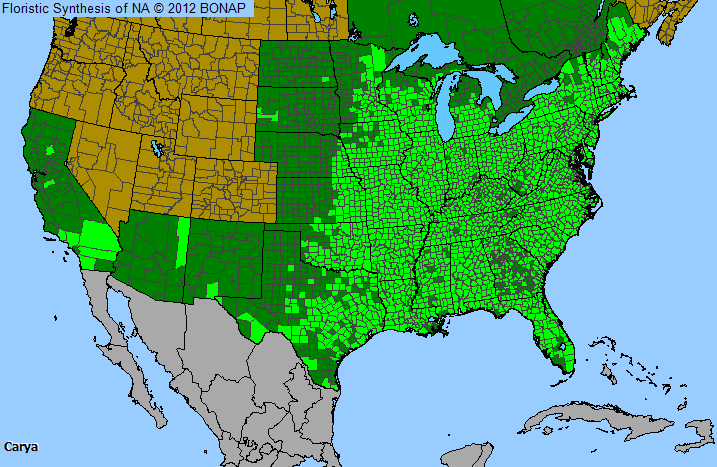
Plant Allergy Overview
Allergenicity
Severe
Pollen Season
Spring Summer
Type
Tree
Sub-Type
Deciduous
Allergy Information
Pecans have been reported to cause severe pollinosis. Other hickory pollen are known to cause pollinosis where trees are abundant, such as in Mid-Atlantic states. Shellbark hickory pollen is known to be the most allergenic pollen in this genus, similar in severity to boxelder and willow.
Genus Details
Hickory trees have clear, straight trunks with grey scaly bark at maturity. They commonly have a spreading crown that reaches heights over 100 feet. The fruit is a nut enclosed in a semi-woody husk. These trees are found in eastern and central U.S. The strong wood and tasty nuts produced by this tree make it popular for many uses. Male flowers (the flowers which produce pollen) are in flexible, thin tassels that hang down from the ends of branches (catkins). The female flowers are solitary or in clusters of 2-10 on the same tree. The wind-pollinated flowers appear in spring before the leaves unfold. Abundant pollen is shed in late spring. Pecans, a species within this genus, are planted in orchards or as boulevard trees and flower in mid-April to May.
Pollen Description
Grains are isopolar, heteropolar, or paraisopolar; the amb triangular, rounded triangular, polygonal or circular and 3-(4)-porate. The intine is thick between the apertures, forming a lens shaped oncus.
Pollen grains are usually 10-31 x 11-68 micrometers.
Genus Distribution

The shaded areas on the map indicates where the genus has been observed in the United States.
 - Native, observed in a county
- Native, observed in a county  - Introduced, observed in a county
- Introduced, observed in a county  - Rarely observed
- Rarely observedSpecies in Hickory Genus
Allergens & Plants Search
Enter a full or partial species name to find more information on one of over 1,200 potentially allergenic plants.
For example, you can find chenopods searching on "cheno"

